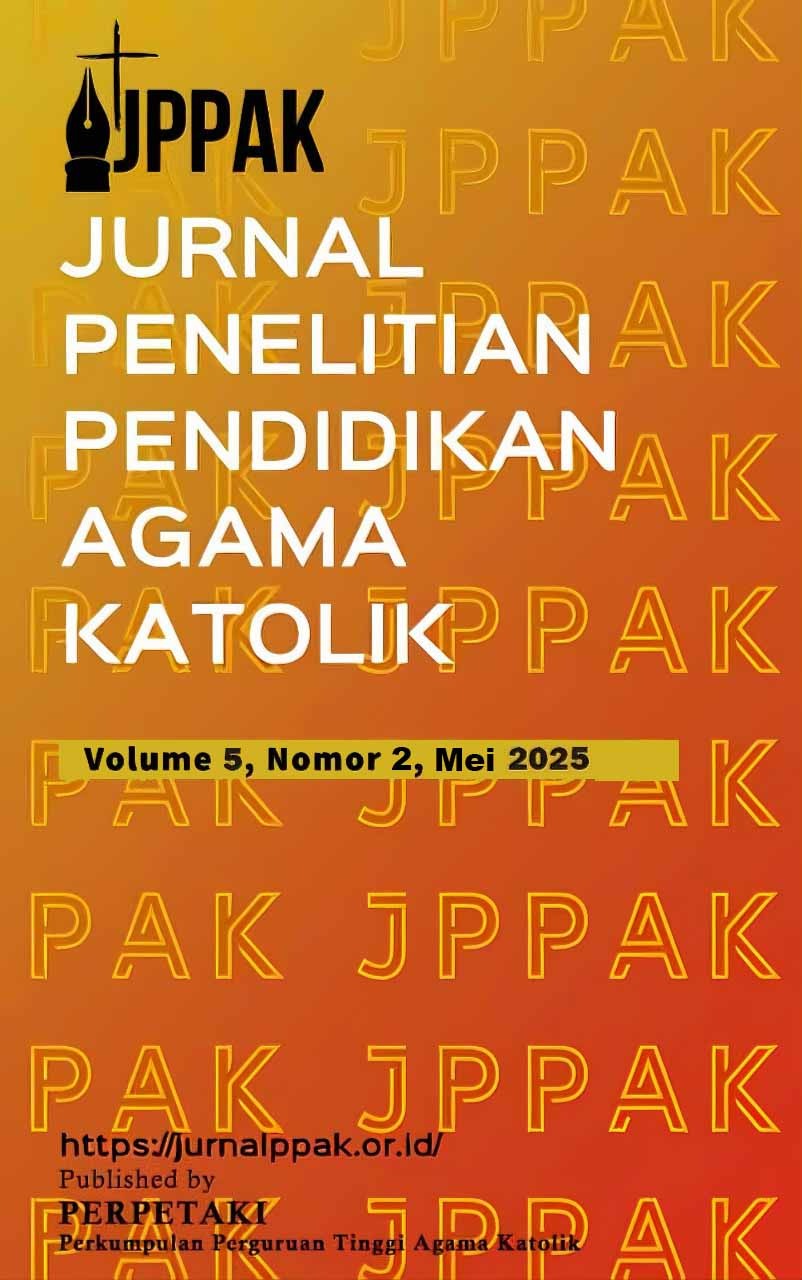Pengaruh Pembelajaran Berdiferensiasi terhadap Peningkatan Hasil Belajar Pendidikan Agama Katolik dan Budi Pekerti Kelas X di SMK Sanjaya Pakem
DOI:
https://doi.org/10.52110/jppak.v5i2.208Keywords:
Pembelajaran berdiferensiasi, Pendidikan Agama Katolik dan Budi Pekerti, hasil belajar, strategi pembelajaran, D-VucadAbstract
This research applies a quantitative approach by applying one group pretest-posttest. To collect samples, researcher used a saturated sampling technique. Then, 50 people were selected as the sample. Learning outcome tests are used to collect research data. Later, data were deeply examined using the normality test, hypothesis testing, followed by simpel linear regression test. The study findings indicate that the average pretest score is 72.73 and the posttest score is 88.75, as evidenced by the pretest and post learning outcomes data. The average value indicates a notable variance in values pre and post treatment. This indicates that Ha has been approved. This indicates that the pretest and posttest scores differ, revealing that differentiated learning strategies have increased learning achievements of Catholic religious education in class X SMK Sanjaya Pakem. Furthermore, according to a basic linear regression analysis, it was determined that personalized instruction had a significant impact of 72.4%. The researcher recommended that Catholic religious education teachers utilize differentiated learning strategies to enhance student learning results in Catholic religious subjects.
Downloads
##submission.downloads##
Submitted
Accepted
Published
How to Cite
Issue
Section
License
Copyright (c) 2025 Alexander Hendra Dwi Asmara, Maria Anuntiata

This work is licensed under a Creative Commons Attribution-ShareAlike 4.0 International License.
Copyright Notice and Permissions
Jurnal Penelitian Pendidikan Agama Katolik offers immediate open access to all its content on the principle to make researches freely available to the public, especially to the scholars, to support greater global exchanges of knowledge. This journal encourages all scholarly authors to allow their research openly available, free access and without time restrictions.
All articles published Open Access will be immediately and permanently free for everyone to read and download. Under the CC BY-SA 4.0 license, authors retain ownership of the copyright for their article, however authors grant others permission to use the content of publications in Jurnal Penelitian Pendidikan Agama Katolik (JPPAK) in whole or in part provided that the original work is properly cited. Users (redistributors) of Jurnal Penelitian Pendidikan Agama Katolik (JPPAK) are required to cite the original source by including at least: the full title of the article, the author's or authors' full name(s), JPPAK as the initial source of publication, year of publication and volume number using a propriate citing method.
Copyright encompasses exclusive rights to reproduce and deliver the article in all form and media, including reprints, photographs, microfilms and any other similar reproductions, as well as translations. The reproduction of any part of this journal, its storage in databases and its transmission by any form or media, such as electronic, electrostatic and mechanical copies, photocopies, recordings, magnetic media is prohibited without consent of Jurnal Penelitian Pendidikan Agama Katolik (JPPAK).
Jurnal Penelitian Pendidikan Agama Katolik (JPPAK) is licensed under a Creative Commons Attribution Share-Alike 4.0 International. (CC BY-SA 4.0)
Authors who publish with Jurnal Penelitian Pendidikan Agama Katolik (JPPAK) agree to the following terms:
- Authors retain copyright and grant the journal right of first publication with the work simultaneously licensed under a Creative Commons Attribution Share-Alike 4.0 International (CC BY-SA 4.0) license that allows others to share the work with an acknowledgement of the work's authorship and initial publication in this journal.
- Authors are able to enter into separate, additional contractual arrangements for the non-exclusive distribution of the journal's published version of the work (e.g., post it to an institutional repository or publish it in a book), with an acknowledgement of its initial publication in this journal.
- Authors are permitted and encouraged to post their work online (e.g., in institutional repositories or on their website) after the publication on JPPAK, as long as it not published on other OJS for it will be treated as plagiarism by plagiarism checker apps. It can lead to productive exchanges, as well as earlier and greater citation of published work (See The Effect of Open Access).












